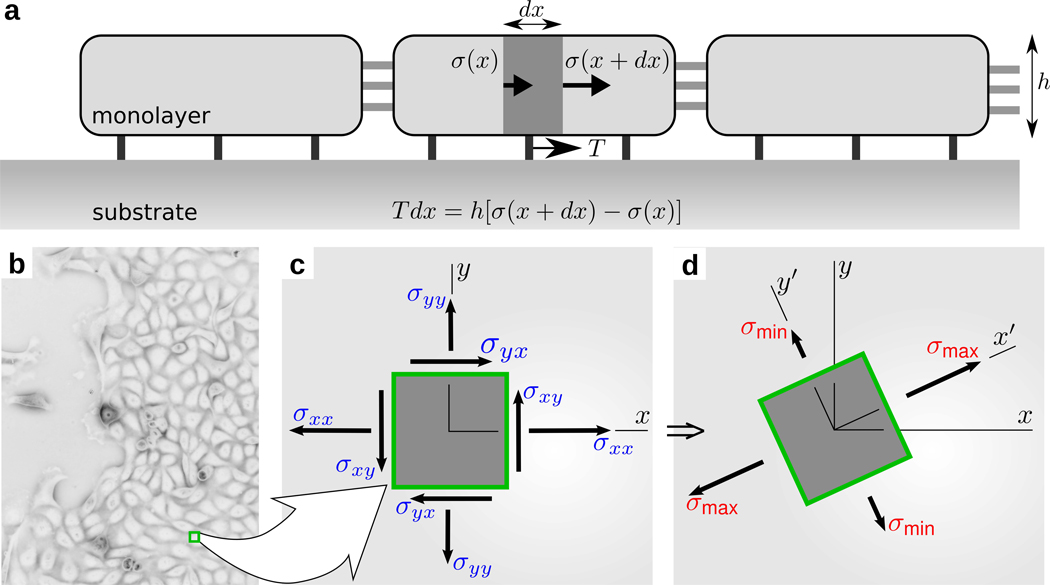Figure 1.
(a) Simplified representation of the physical relationship between cell-substrate tractions, T, which have been reported previously15, and intercellular stresses, σ, which are reported for the first time here. Intercellular stresses arise from the accumulation of unbalanced cell-substrate tractions. At any point within the monolayer (b), the intercellular stresses, defined in laboratory frame (x, y), (c), have shear (σxy, and σyx) and normal (σxx, and σyy) components. This frame can be rotated locally to obtain the principal frame (x', y'), (d), where shear stresses vanish and the resulting normal stresses are called principal stresses (σmax and σmin). The corresponding axes are called maximum, aligned with x', and minimum, aligned with y', principal orientations.

